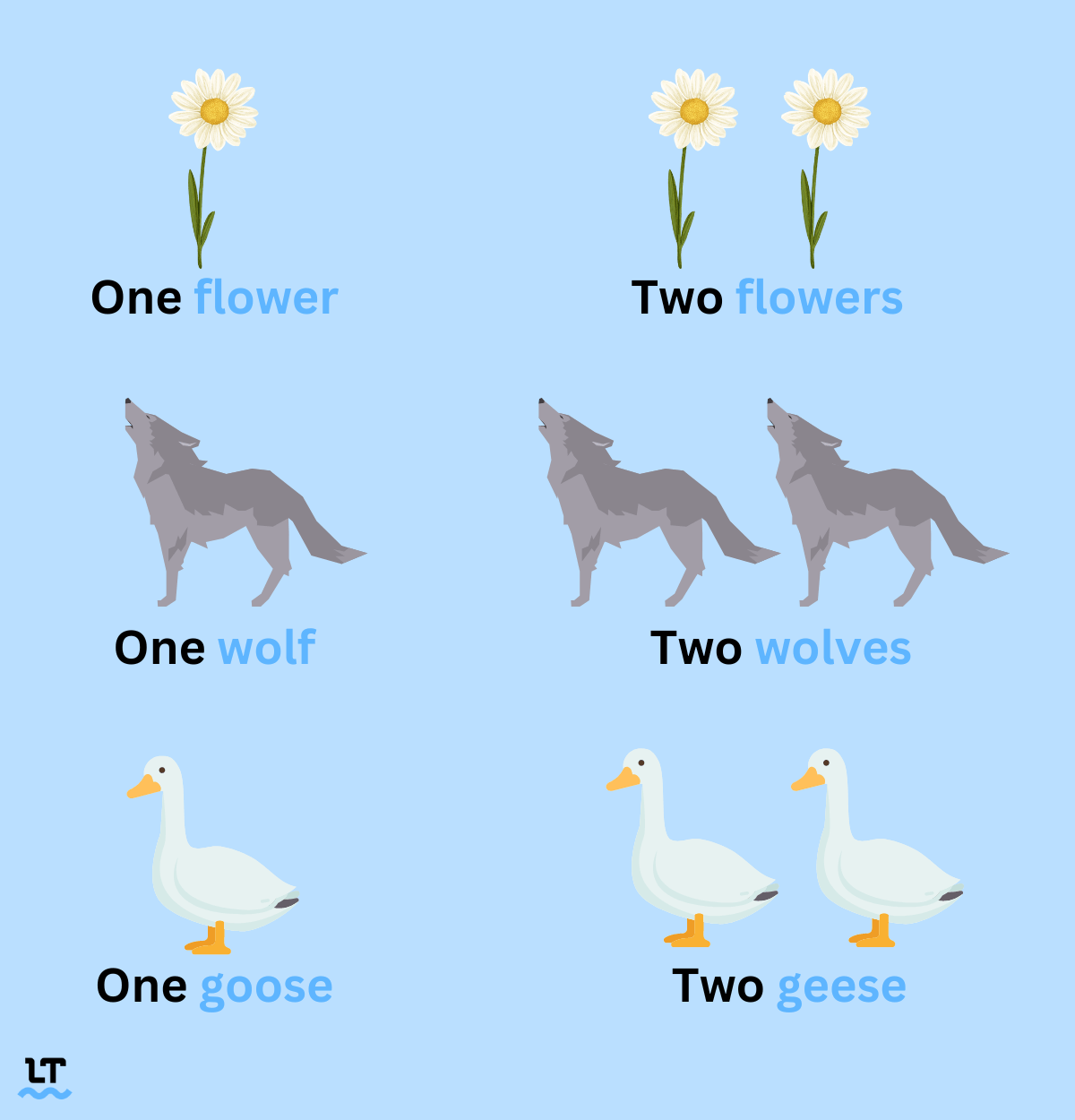Plural Nouns: What Are They and How Do You Form Them?
A plural noun refers to more than one person, place, thing, or idea. For example, flower is singular, but flowers is plural.
Regular nouns become plural by adding “–s” or “–es” to the singular noun, while irregular plural nouns have unique spellings and do not follow the standard pattern.
What’s a Plural Noun?
A noun is a part of speech that indicates a person, place, thing, or idea. While singular nouns refer to a single entity, plural nouns refer to multiples.
- Singular: dog, umbrella, car, table, pen, tree, color
- Plural: dogs, umbrellas, cars, tables, pens, trees, colors
You’ll notice that the nouns above become plural simply by adding “–s” to them. Certain nouns do not follow this standard, but instead have their own guidelines.
Below, we’ll review all the rules regarding forming plural nouns in English. You can also use LanguageTool’s Grammar Checker to ensure you’re using plural nouns correctly.

There are regular and irregular plural nouns.
Learn How To Form Plural Nouns
As with anything in English, keep in mind that there can be several exceptions to these rules.
1. Most nouns become plural simply by adding “–s” to the end of the word.
2. Nouns ending in “–s,” “–ss,” “–x,” “–z,” “–ch” or “–sh” usually become plural by adding an “–es” to the singular form.
3. Some words that end in “–s” or “–z” require that you double those letters before adding the “–es” to form the plural.
4. For nouns that end in a consonant plus “–y,” change the “–y” to “–ies.”
5. Nouns that end in a vowel plus “–y” become plural by adding “–s” to it.
6. Some nouns that end in “–fe” become plural by changing the “–fe” to “–ves.”
7. Nouns that end in “–o” typically get “–es” added to them to form the plural.
8. For singular nouns that end in “–us,” the plural ending is usually changed to “–i.”
9. If the singular form of the noun ends in “–sis”, the plural gets changed to “–ses.”
10. Some singular nouns that end in “–on,” get these letters replaced by “–a” to become plural.
11. Nouns that end in “–um” become plural by replacing “–um” with “–a.”
12. Compound nouns usually form the plural by adding “–s” to the main word.
13. Some nouns remain the same whether they’re singular or plural.
14. Irregular nouns do not follow any specific rules.
Using Plural Nouns Correctly
As you can tell, there are plenty of rules you have to remember to correctly use plural nouns. There are even nouns that don’t follow any rules. For these, if you’re unsure about what is the plural form, you can check a dictionary or, better yet, use LanguageTool.
LanguageTool is an advanced writing assistant that corrects various types of errors, including incorrect proper nouns. Give it a try!
